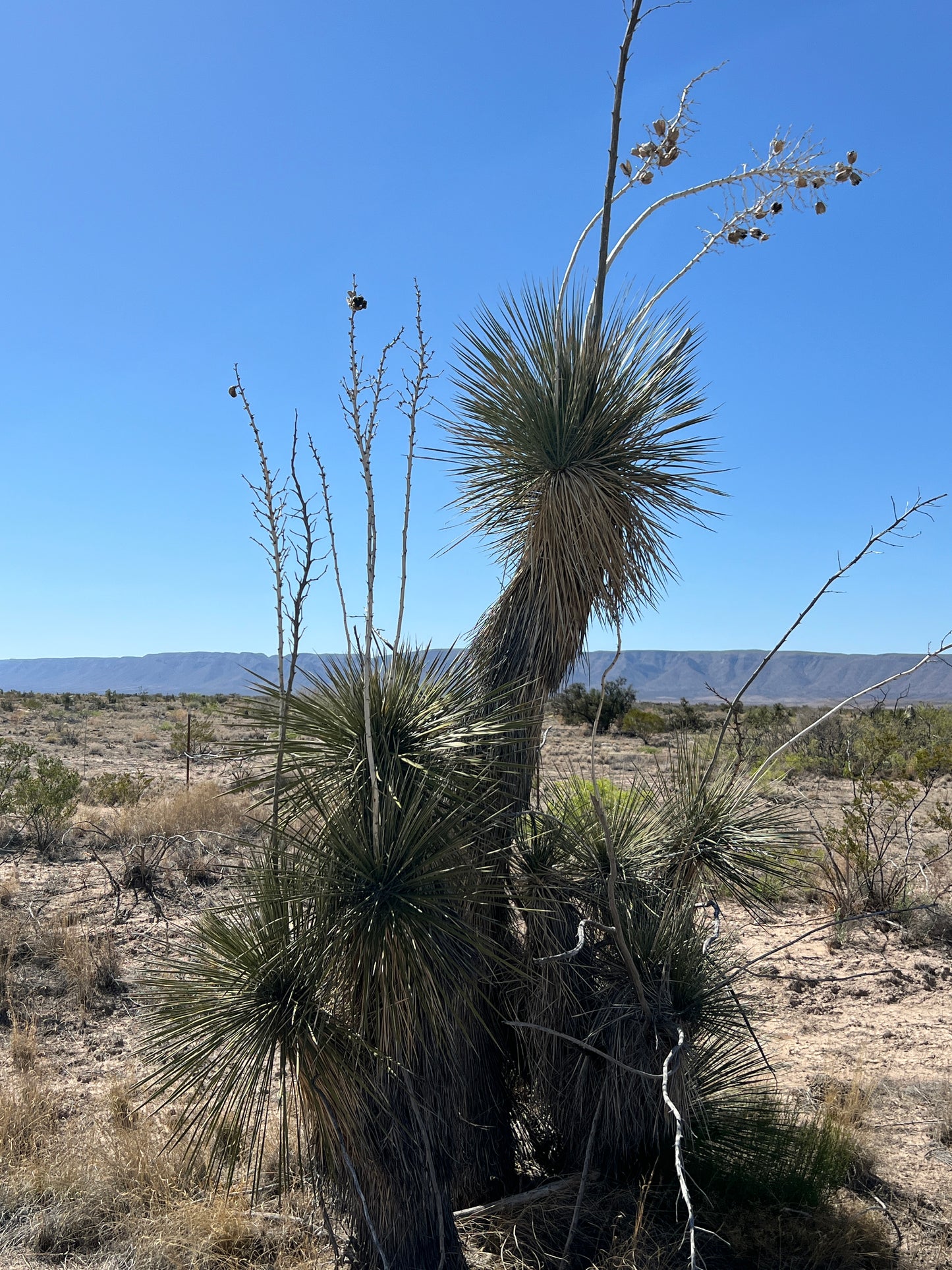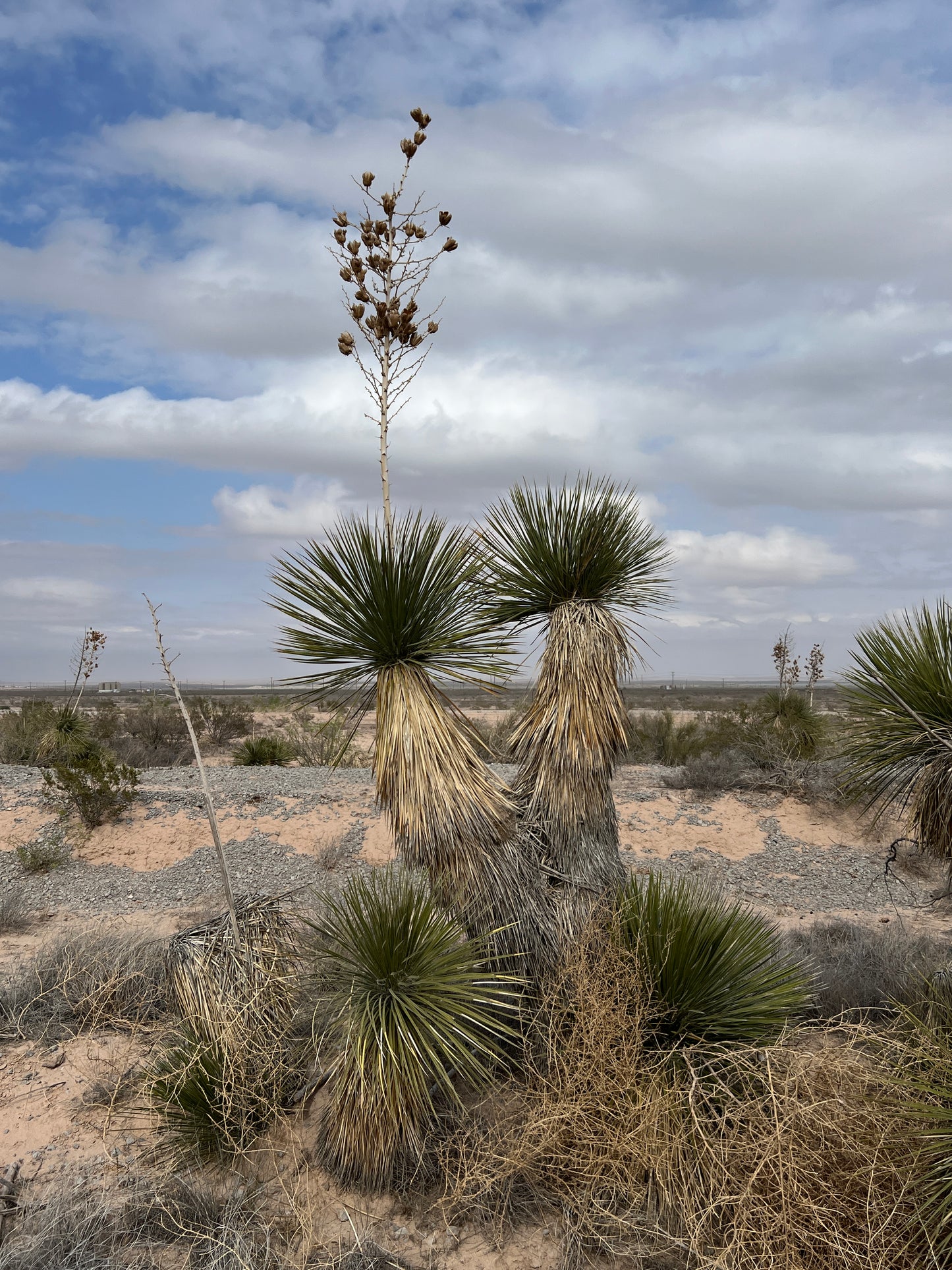Floridaseeds
Soap Tree Yucca Yucca elata 100 Seeds
Soap Tree Yucca Yucca elata 100 Seeds
Couldn't load pickup availability
Yucca elata, commonly known as the soap tree yucca or palmella, is a species of yucca native to the southwestern United States and northern Mexico. Here are some key characteristics of Yucca elata:
Appearance: Yucca elata is a perennial evergreen shrub or small tree that typically grows to heights of 3 to 5 meters (10 to 16 feet), though some specimens can reach up to 9 meters (30 feet) tall. It has a single trunk or multiple stems arising from a basal rosette of stiff, sword-shaped leaves. The leaves are long, narrow, and rigid, with pointed tips and serrated edges. They are typically bluish-green to gray-green in color.
Flowers: Yucca elata produces tall, erect flower spikes that rise above the foliage in late spring to early summer. The flower spikes can reach heights of up to 3 meters (10 feet) and are densely packed with creamy-white, bell-shaped flowers. The flowers are highly fragrant and attract pollinators such as moths and butterflies.
Fruit: After flowering, Yucca elata produces large, pear-shaped fruits that are green when immature and turn brown when ripe. The fruits contain numerous black seeds and are edible when cooked. They were historically used by Native American tribes as a food source.
Habitat: Yucca elata is native to arid and semi-arid regions of the southwestern United States, including Arizona, New Mexico, Texas, and southern California, as well as northern Mexico. It grows in sandy or rocky soils in desert scrub, grasslands, and foothill woodlands.
Cultural significance: Yucca elata has been used by indigenous peoples of the region for a variety of purposes. The leaves were used to make baskets, rope, and other woven goods, while the flower stalks were used as fishing poles. The fruits and seeds were also consumed as food.
Landscaping: Yucca elata is often grown as an ornamental plant in xeriscapes, desert gardens, and other dryland landscapes. It is valued for its architectural form, drought tolerance, and low maintenance requirements. It can be used as a focal point or specimen plant, or planted in groups for visual impact.
Materials
Materials
Shipping & Returns
Shipping & Returns
Dimensions
Dimensions
Care Instructions
Care Instructions
Share












